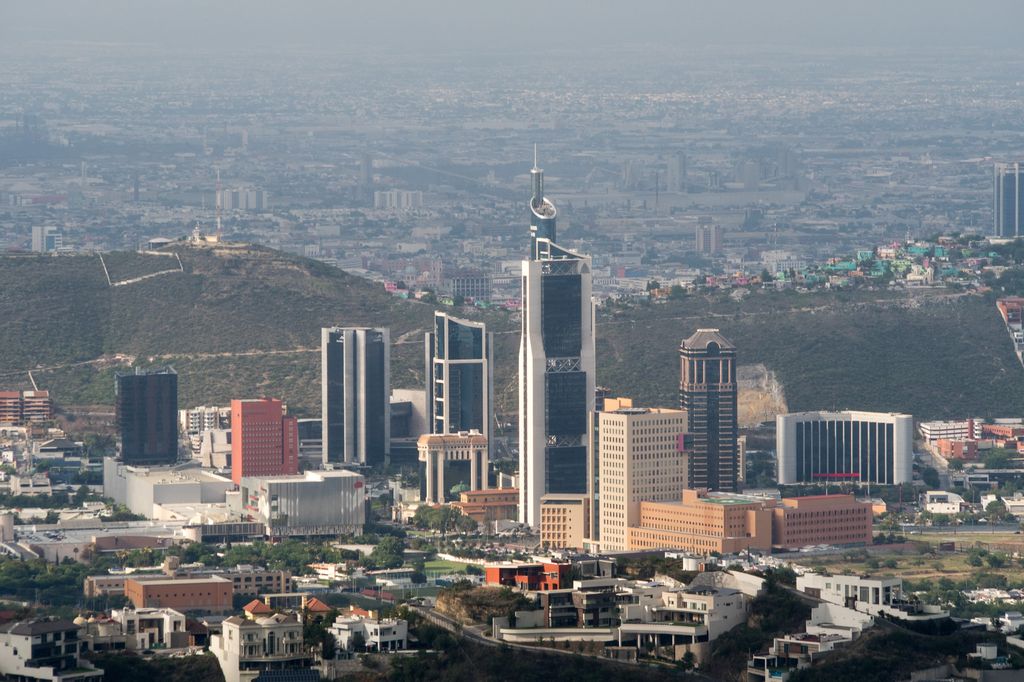Embedded in Research
BU Sociologist Ana Villarreal's personal and professional life blurred as she researched her new book, "The Two Faces of Fear: Violence and Inequality in the Mexican Metropolis"
BU Sociologist Ana Villarreal's personal and professional life blurred as she researched her new book, "The Two Faces of Fear: Violence and Inequality in the Mexican Metropolis"
When a massive turf war took over northeastern Mexico in the mid-2000s, the line between Ana Villarreal’s personal and professional life began to blur.

“This topic chose me,” she said, referring to her first book The Two Faces of Fear: Violence and Inequality in the Mexican Metropolis, published in May 2024. “I only became a sociologist of violence as violence became so central to the every day of people in my hometown.”
In her book, Villarreal delves into the divisiveness of fear following a sudden and highly disruptive escalation of criminal and state violence in Monterrey, Mexico. The book draws on a sample of 154 residents from different socio-economic backgrounds “recreating their lives around a sustained period of fear.”

Raised in Monterrey, the surge in violence deeply resonated with Villarreal. As crime and drug trafficking increased throughout Mexico, she heard through the experiences of her loved ones how residents had changed their behaviors to feel safer.
While these new forms of violence had been “simmering for decades” in Monterrey, the issue had escalated as groups of organized crime disputed over northeastern Mexico. As kidnappings, homicides, and carjackings had become an increased threat to the general public, the way that they were living had to change.
However, the closer she analyzed Monterrey locals recreating their daily lives around fear, the more she began recognizing how fear also “widened the gaps of inequality.”


Monterrey is one of the wealthiest cities in Latin America and was a relatively safe place to live until 2009, when the city experienced a dramatic increase in homicides—of the nine municipalities in Monterrey, the wealthiest municipality reported fewer crime-related incidents, specifically, San Pedro Garza Garcia, which became a “defended city” as Villarreal called it.
San Pedro is a municipality in the Monterrey Metropolitan Area that is home to the wealthiest residents of Northeastern Mexico. Increased violence and fear prompted the most privileged residents of the metropolis to concentrate within a defended San Pedro, which allowed them to recreate forms of nightlife and public space lost elsewhere, while residents outside this municipality still felt scared to leave their homes.
Most scholars study why people experience fear, but Villarreal introduces the study of fear as an obstacle. She recognized that people in high-violence environments have to learn to readjust their daily lives around the increased presence of violence. Where do they live? How do they get to work? How do they organize social gatherings? While many may confront these problems, people have unequal resources to deal with them. Villarreal argues that as people rely on unequal resources to solve or at least manage fear on an everyday basis, they widen the gaps of socio-economic inequality.
Paying close attention to what people do when they are afraid reveals that fear simultaneously isolates and unionizes people deepening inequality. “It just polarizes every form of inequality—class, racial, gender, social, spatial,” said Villarreal.

Villarreal spent two years gathering ethnographic observations and conducting interviews during a period of high violence. While working in the field was difficult, the most challenging part of Villarreal’s research was gaining distance from this data and her hometown. After returning from Monterrey, it took her over a decade to deeply analyze her findings and craft the final narrative.
She describes having “too much access” at times, working through a network of family and friends of friends. When Villarreal was speaking to Monterrey residents about their experience, it was always someone she could trust.

“I am embedded in this city,” Villarreal said. “My friends from childhood and college live there. All the people I love live there, so you can never leave when you are bound to the people in the place,”
As a woman working in a majority-masculine field, Villarreal also shared the challenge of being a woman writing about the sociology of emotions.
“We’re still finding it challenging to be taken seriously, that emotions can completely alter a city for example,” she said, referring to the gravity of her research. “Emotions are worth studying in the same way that we study, you know, states and markets.”
She actively tried not to speak about her own emotions in The Two Faces of Fear. “The moment a woman talks about how she’s feeling, people think ‘This sounds mushy!’” Villarreal said. “But nothing about this book is mushy—emotions are powerful.”
The BU Initiative on Cities is hosting a book launch party for “Two Faces of Fear” on September 18, 2024.